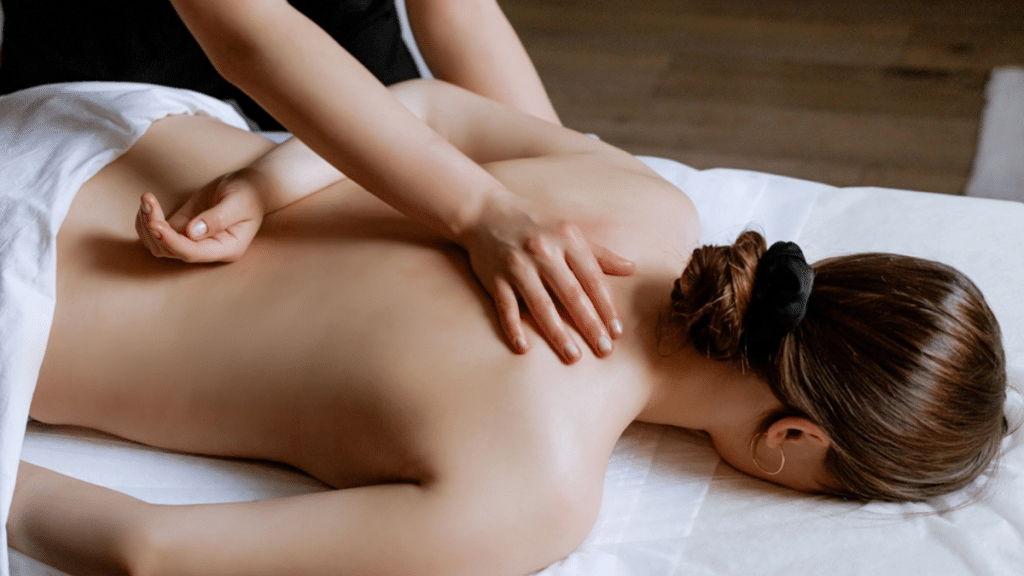Sports massage has long been associated with athletes and elite performers, but it’s no longer just for professionals. Whether you’re a runner, weightlifter, weekend footballer, or just someone who takes fitness seriously, sports massage is now recognised as a vital part of a smart training and recovery routine. But what’s really happening under the surface during a sports massage? What makes it so effective?
Let’s explore the science behind sports massage—and why it works so well for performance, recovery, and injury prevention.
What Is Sports Massage?
Sports massage is a form of therapeutic bodywork that targets specific muscles, joints, and soft tissues used in athletic activity. Unlike a typical relaxation massage, sports massage is structured, focused, and goal-oriented—often designed to:
- Speed up recovery
- Improve range of motion
- Reduce muscle tightness
- Prevent injury
- Optimise performance
It involves a combination of techniques, including deep tissue manipulation, trigger point therapy, stretching, and myofascial release. But it’s not just about pressure—it’s about function.
1. Increases Blood Flow and Oxygen Delivery
One of the most immediate effects of sports massage is increased circulation. By applying rhythmic pressure to muscles and connective tissue, massage stimulates blood vessels and promotes better blood flow.
This enhanced circulation delivers more oxygen and nutrients to tired muscles while flushing out waste products like lactic acid and metabolic byproducts that build up during intense physical activity. The result? Faster healing and less post-exercise soreness.
2. Reduces Muscle Tension and Fascial Restrictions
After intense exercise or repetitive movements, muscles can become tight, stiff, and “stuck” in shortened positions. Over time, this can restrict movement and lead to compensation patterns that increase the risk of injury.
Sports massage works to release muscle tension and lengthen tight fascia—the connective tissue that surrounds muscles and organs. Releasing fascial restrictions helps restore natural movement patterns and prevents imbalances that can lead to overuse injuries.
3. Stimulates the Lymphatic System
The lymphatic system is responsible for clearing waste, toxins, and excess fluid from the body. Unlike the cardiovascular system, it doesn’t have a pump—it relies on movement and manual stimulation to function effectively.
Massage helps stimulate lymphatic flow, especially in areas where swelling or inflammation is present. This is particularly helpful after training, competitions, or injury, when the body is flooded with inflammatory byproducts. Clearing out this excess fluid helps reduce swelling, stiffness, and recovery time.
4. Neurological Benefits: Reducing Pain and Calming the Nervous System
Massage doesn’t just affect the muscles—it also works on the nervous system. Deep pressure stimulates mechanoreceptors in the skin and muscle tissue, which send calming signals to the brain and override pain signals.
This process, known as “gate control theory”, helps explain why massage reduces pain sensitivity. In addition, massage increases the release of feel-good neurotransmitters like dopamine, serotonin, and endorphins, while reducing stress hormones like cortisol. This leads to both mental relaxation and physical pain relief.
5. Enhances Flexibility and Range of Motion
Sports massage incorporates techniques that improve joint mobility and muscle elasticity. By loosening stiff areas and increasing tissue pliability, massage helps restore full range of motion around joints—something that’s essential for athletic performance.
In fact, studies have shown that regular massage can improve flexibility and decrease injury risk, especially when combined with active stretching and strength work.
6. Supports Recovery and Injury Prevention
Ultimately, the goal of sports massage is long-term performance longevity. Athletes who receive regular massage experience fewer injuries, faster recovery times, and better consistency in their training.
By addressing muscle tightness, identifying early warning signs of imbalance, and maintaining soft tissue health, massage becomes not just a reactive treatment—but a preventative strategy.
Final Thought: Recovery Is Part of the Work
In modern fitness culture, we talk a lot about hard work—training, pushing limits, setting new goals. But science is clear: recovery is just as important as effort. Sports massage is one of the most effective, evidence-based tools for restoring the body, enhancing performance, and staying injury-free.
It’s not just a luxury—it’s a necessity for anyone who wants to move better, feel stronger, and stay in the game for the long haul.
Angela Spearman is a journalist at EzineMark who enjoys writing about the latest trending technology and business news.
